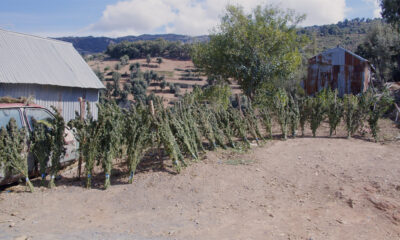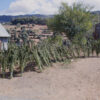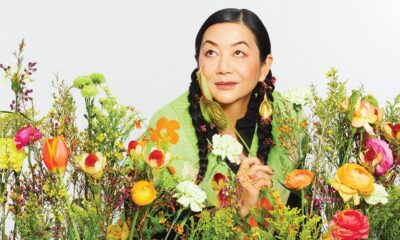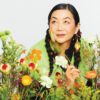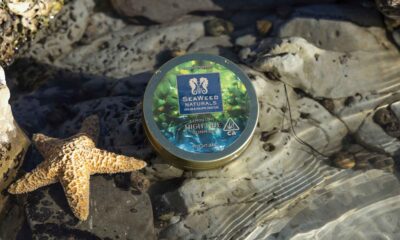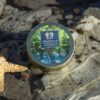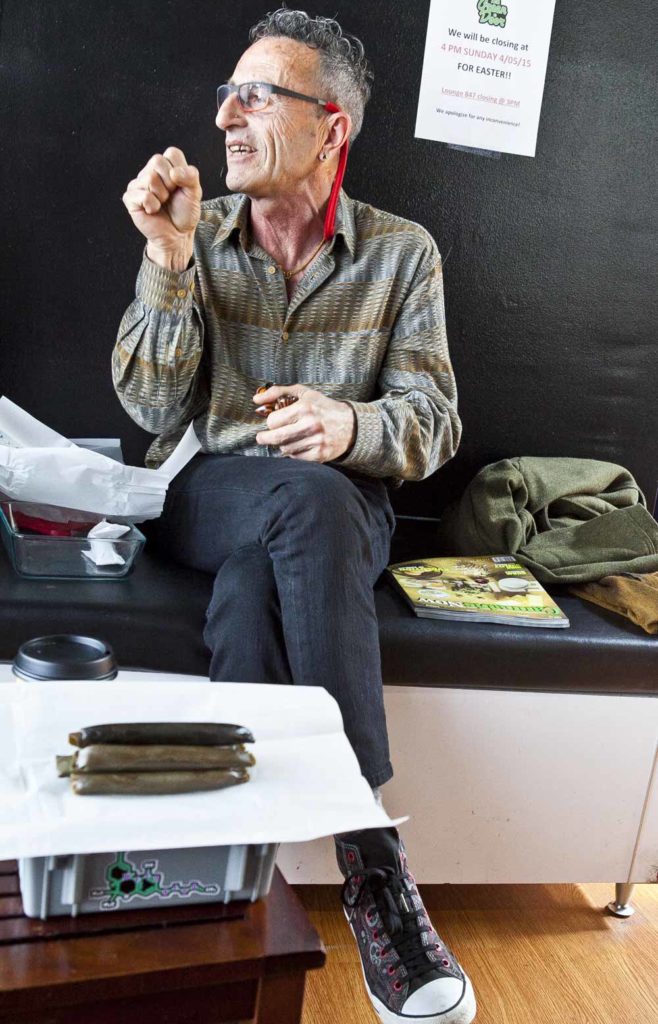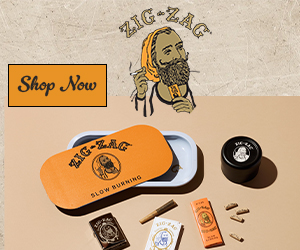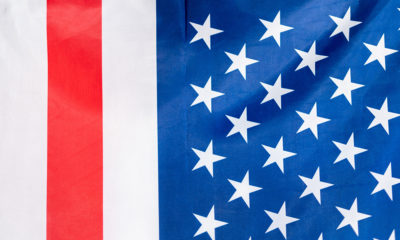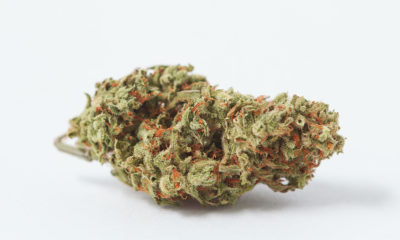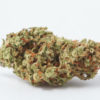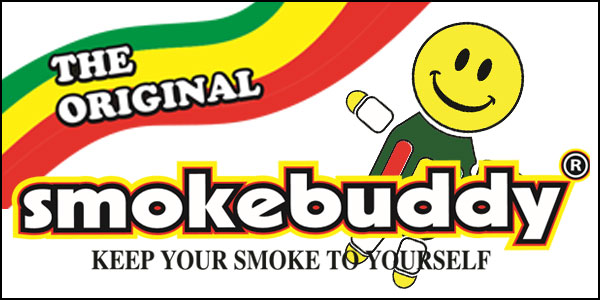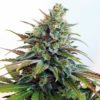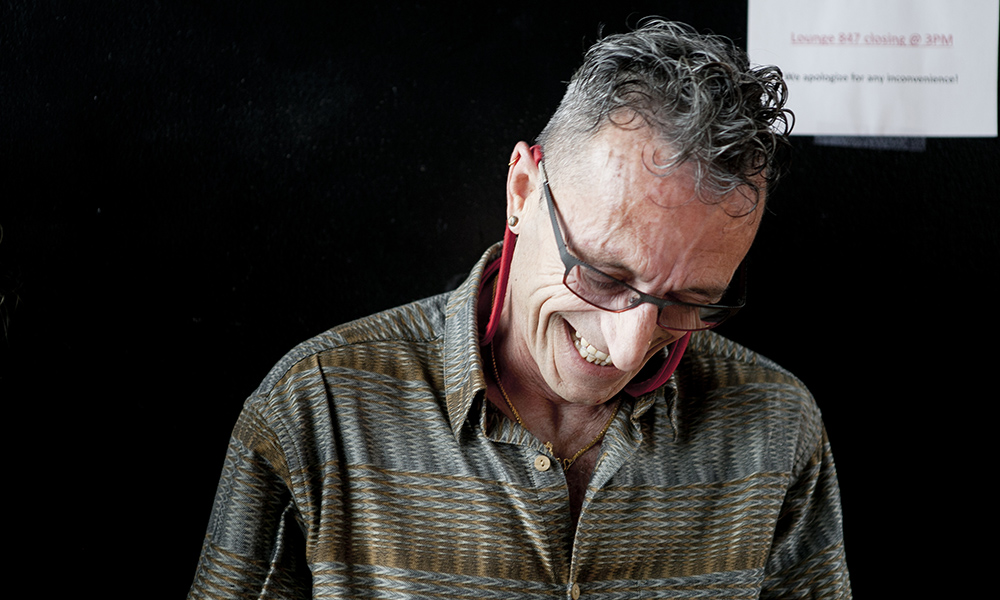
Culture
How Frenchy Cannoli Saved the Emerald Triangle
The cannabis industry pioneer and hashishin won the hearts of all he met while bringing awareness to craft cannabis.
Leo Stone had just won first place in the 2012 Emerald Cup for his cut of Mendocino County-grown Chemdawg Special reserve. Following his acceptance speech, he was walking off the stage, trophy in hand, when a stranger accosted him.
The stranger was a small, funny-looking man with a prominent nose and pointy ears, an enchanting smile like the Cheshire Cat’s, and a foreign accent, thick and rich like resin. He had something to show Stone, and he needed to show him immediately — no time for being coy or waiting in line to offer the winner his well wishes.
“He bum-rushed me and showed me the loudest hash I’ve ever smelled in my life,” recalled Stone, the founder of Aficionado Estates, a leading seed bank with more than 20 major cannabis cup awards to his credit.
As far as icebreakers go, Stone’s introduction to Frenchy Cannoli, the Northern California master “hashishin,” educator and personality who died July 18 was an unprecedented success.
“I told him right then and there, ‘You’re my hash guy forever,’” Stone told me in an email. Keep in mind this was before they’d even exchanged names — Frenchy’s, a sly and playful adaptation of the French and Italian influences on his real name (which as far as I know, was never revealed publicly). “He was officially my hash guy without even smoking his hash — the nose alone sold me,” Stone added. “And his energy.”
For the rest of Frenchy’s life on this earth, which ended at age 64 following complications from a surgery, he and Stone remained close friends and collaborators. Frenchy immediately zeroed in on Stone for two reasons. Stone recognized the importance of the dirt in which his cannabis was grown. For winemakers, this concept is known as “terroir,” a word Frenchy would deliver with inimitable magic, in his sun-seasoned Marseille accent, many times over the next few years. And Frenchy appreciated the way Stone’s Aficionado labels prominently featured the word “MENDOCINO.” Presenting the region where his cannabis was grown first — before himself and before his brand — reminded Frenchy of how French winemakers classify and market their wine. “Mendocino,” he would later say, “could become the Bordeaux of cannabis.”
The two had more in common — both had lived in Japan, where Stone was stationed in the military, and where Frenchy’s daughter was born — but the root of their connection was just that: roots in dirt.
“That’s what we agreed on first and foremost and above all: We agreed on the fact that the farmer is only as good as his terroir,” Stone told me.
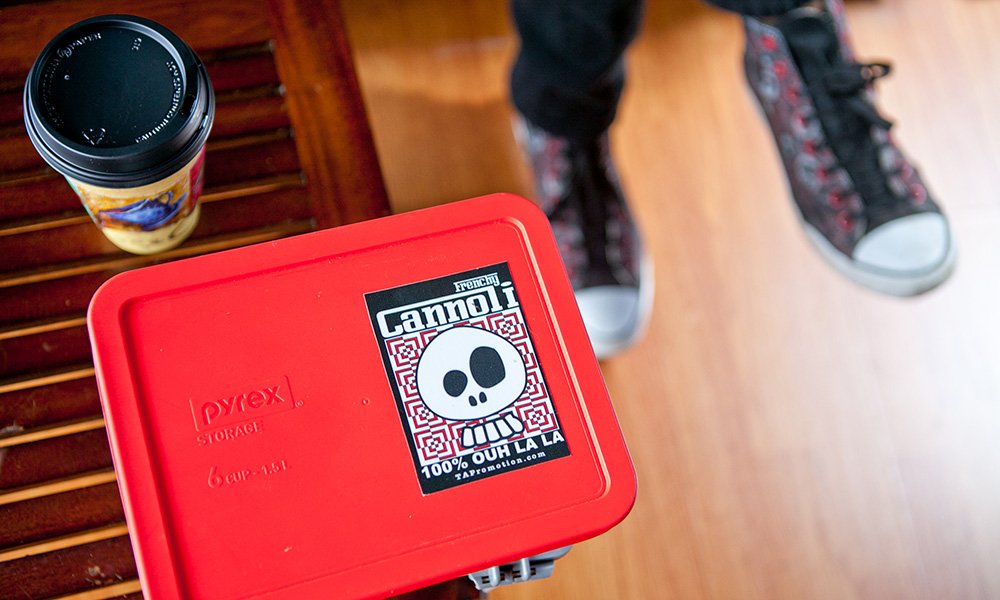
This meant that, like a winemaker, a top cannabis farmer needs to be somewhere in particular. The land is important; the land allows the plant to fully express itself. (Frenchy once described it this way: if sun-grown outdoor is a wolf, indoor cannabis can be a caged dog.) By that time in his life, Frenchy had been just about everywhere cannabis is found, but he recognized there was something extremely special about the hilltops shaded by the towering redwoods and pines in remote Northern California.
“After staying at my farm for many weeks and months, he fell in love in Mendocino, as it reminded him most of his times in the Himalayas making hash,” Stone said.
And this begins the story of how Frenchy Cannoli saved the Emerald Triangle.
The Essence of Frenchy
Before we get to that, let me share some Frenchy stories, and some Frenchy truths.
To say that Frenchy was a Northern California-based master hashmaker and connoisseur; an autodidact, scholar and teacher outrageously generous with his time and acumen; an original hippie who spent 18 years wandering the world; an excellent cook who knew wine; and an unforgettable presence and personality who “loved cannabis” — sure. These are all true statements.
But like calling the elfin package of momentum and motion, of love for life and humans (and the cannabis plant) a “hashmaker,” or a “teacher,” or a “bon vivant,” or whatever, there’s truth there, but the truth is insufficient. It does not capture the full essence of the man, who touched everyone he came in contact with.
Somehow, Frenchy knew everyone, and Frenchy was friends with everyone. Impossible statements, by the rule of logic. You can’t know everybody; surely you must rub someone the wrong way. You can’t love everybody, and they won’t all love you. Yet, in the eight or so years Frenchy worked in the legal cannabis industry in the Bay Area, California, Barcelona, and beyond, he managed this. I can’t recall Frenchy ever speaking ill of anything, or anyone — not even traffic or the weather.
Everything was good. No, everything was great. “Supahcool,” he’d say. “Oh, it is bomb,” he’d say, before flavoring his statement and the air around him with a grand gesture or a rapid-fire “oh la la,” the words running swiftly and smoothly, as easy and fluid as Frenchy’s dance moves.
After reaching success as a hashmaker and making a name for himself in the cannabis industry, Frenchy dedicated the last years of his life to imparting this knowledge and passing it on to as many people as possible. He accomplished this through a series of hash workshops, endless Q&A sessions on message boards, on Instagram and Youtube, and in person if you were lucky.
Hanging out with Frenchy was intoxicating. Seshing with him was a true test — of your endocannabinoid system, and your self-control. Keeping up with him was impossible, as one of his hash workshop attendees learned.
You should have seen this kid: his eyes narrowed to tiny slits, sunk deep into a couch with his body unfolded into a leaned-back L just a few degrees away from horizontal. His brain and lungs were filled with the ridiculous hash buffet arrayed on the coffee table before him — Frenchy’s private stash! Hashes that had been aging for years! Everyone else tried to listen and watch and remember and learn as Frenchy danced around the work area, showing off his sifter for dry sieving; showing off the converted lingerie washing machine he used for washing trim; showing the tricks he’d learned and honed and finessed over many years.
You’d know this, too, if you stumbled into Frenchy at later Emerald Cups, or at MJBizCon afterparties, where some sensible and wise entrepreneur or brand decided to invite Frenchy, his wife Kimberly (the glue that held this kinetic carnival together) and Frenchy’s enormous, six-person hookah. Nobody had ever seen anything like it. “Oooookah time!” Frenchy would shout, and that meant breathing for dear life, inhaling and inhaling, and — if you were me — never quite managing to clear the column of terpene-rich hash smoke chimneying your way. If you made enough of an impression, maybe Kimberly and Frenchy would invite you over to their place for dinner. Not just an amazing meal, but hours and hours of discursive banter and serious discussion — and, yes, a pre-dinner smoke — to the point where you wondered if your magnanimous host would ever shut up long enough to throw you out, as you scurried around scooping up observations and anecdotes like they were precious jewels.
There is now a mural in his honor, the paint barely dry, on a wall in the south of France. There are raw, heartfelt tributes on the Facebook walls and Instagram pages of almost everyone I can think of associated with the Emerald Triangle.
Frenchy built this profile with two weapons, the same tools that disarmed and charmed Leo Stone: the force of his personality — that is, himself — and his amazing hash.
Before legalization, in the medical cannabis days, Nicholas Smilgys used to buy for SPARC, the dispensary in San Francisco’s South of Market with design so fine it made the New York Times’ Style section, way back in 2010 — a first for a weed store. This was a high-class joint; not just anyone could sell weed here.
One day, Frenchy appeared at the counter with Stone. In an era when cannabis’ mad scientists were tinkering with CO2 extraction machines and blasting trim with butane to make shatter dripping with terps, here was this weird old hippie whose speech you could barely understand, with these balls of hash, resembling the hand-rolled chara sticks gurus in the Hindu Kush would have shown Alexander the Great. Would SPARC like to put these dark-brown blobs next to their shimmering crystal extracts?
“I was skeptical, but I bought it because I liked him,” recalled Smilgys. He believed he was doing this charming eccentric a favor. “I believe I told him no one will buy black hash,” he added. But once customers smelled and tasted it, it sold faster than Frenchy could make it.
So, now here’s a Frenchy truth. This may sound like a hyperbolic statement, but I assure you it is true, and I believe it will become Frenchy’s most lasting testament: If there is still craft cannabis grown in Mendocino County in fifty years, or a century from now — if there is boutique cannabis, grown by small operations owned and run by families, united by passion, if not blood — Frenchy Cannoli will be responsible.
Much remains to be done before it is accomplished, and much could still go wrong, but I’ll say it again: Frenchy Cannoli saved the Emerald Triangle.
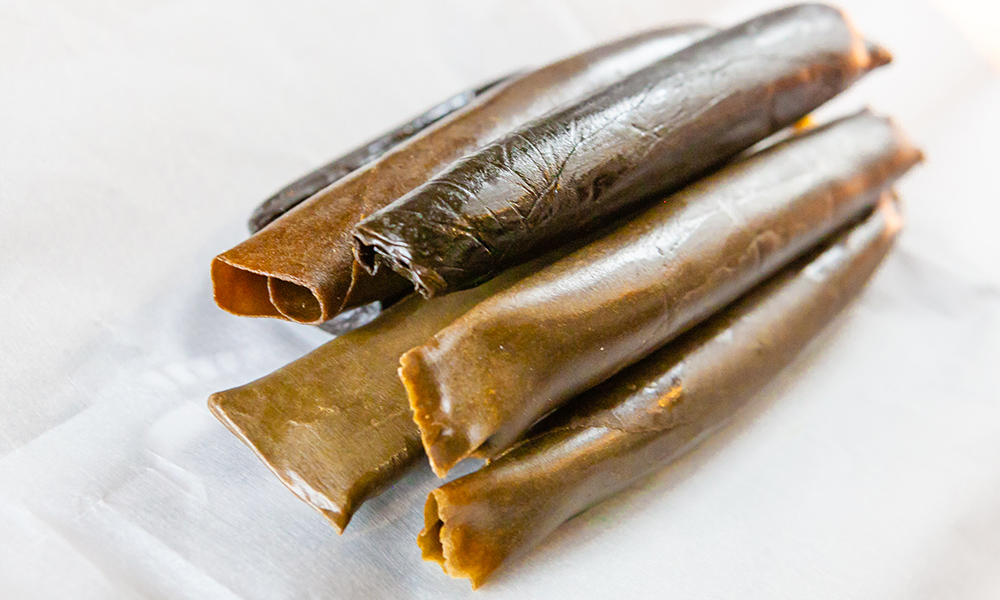
Bordeaux of Cannabis
In 2015, a few years after that first encounter at the Emerald Cup, Frenchy accompanied Leo Stone to a meeting in Garberville. This was a big one: Gavin Newsom, then the California lieutenant governor and the biggest political name in the state to embrace cannabis legalization, was in town. He was there meeting small cannabis farmers and visiting their grows, allowing them to bend his ear, to tell him how cannabis could best be legalized, so as to preserve the Emerald Triangle’s heritage and stable-but-precarious economy.
This was a pivotal moment. Medical cannabis had been decent to the area. Years of cowboy county sheriffs and DEA agents riding helicopters — buzzing double-wide trailers and hilltop cabins and hoop houses with a few dozen plants in plywood planter boxes — hadn’t managed to stomp out the Emerald Triangle’s legendary renegade marijuana economy. But legalization spooked them. They’d voted against it in 2010. Turned out capital and commercialized cannabis, the suits and the Patagonia vests from the big cities, were far more menacing threats. And Newsom and other lawmakers and suits from the big city were here to see how they could convince the Emerald Triangle not to vote against legalization again.
Also at this meeting was another ambitious pair from San Francisco: a lawyer named Matt Kumin, and a nightclub owner and activist named Terrance Alan. As Stone recalls, the “cannabis is like wine” notion — the idea of valuing names like “Humboldt” and “Mendocino,” and emphasizing how cannabis grown here was different than cannabis grown inside or in the agricultural plains — belonged to them. “They expressed the deep need for farmers to advocate for their region and to push for appellations,” he recalled.
In other words, if cannabis farmers were going to tell consumers why weed grown in Spy Rock and in Willow Creek, in the Trinity Alps and in the Covelo flatlands was special, they needed to list the region on the label. They needed to think like winemakers. This was a mission that Frenchy Cannoli immediately assigned to himself.
“He promised that he would do everything in his power to bring awareness to appellations and preserve the way of life he found and fell in love with in Mendocino and Humboldt counties,” Stone recalled.
So, Frenchy threw himself into it, reading, researching, writing and speaking. (The through-line of an as-yet unfinished documentary in which he is the main character, “Frenchy Dreams of Hashish,” is that Mendocino is already the Bordeaux of cannabis; people just need to realize it). There are many others involved in what is now the California Cannabis Appellation project, which is still in the works and not quite out the door after several years winding its way through the Sacramento bureaucracy, but it’s getting there.
Others deserve credit — Genine Coleman, executive director of the Origins Council, has put in immense time dealing with state cannabis regulators and local politics, artificial barriers Frenchy didn’t have much time for. His passion was the plant, as he often said, and his purpose was spreading that like a seed.
“I think people would be far less aware of appellations and terroir if Frenchy had never come around,” Smilgys told me. “I’m grateful for that.”
The other major project from the last years of Frenchy’s life was what more self-conscious people would call their legacy. For Frenchy, it was returning a favor. Days before he died, there he was on Instagram Live again — his hair cropped close, his eyes wider than I’ve ever recalled; his voice, now thin and reedy, stripped of its depth and flavor. In other words, he was visibly ill, yet he was answering as many questions about hash-making as he could field from anyone who asked. It was like a race to the finish, perhaps trying to wrap up the final project before it was too late.
“No, I don’t believe that he didn’t live long enough,” said Nikki Lastreto, co-founder of Mendocino County’s Swami Select brand. “Frenchy told his beloved wife Kimberly that if he died tomorrow, he would have lived a perfect life. I don’t think Frenchy had regrets.”
Mahalo, brother. May your memory be a blessing, for your presence was a treasure.



